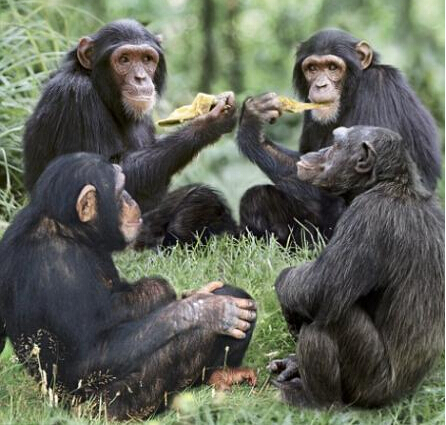They understood basic grammatical constructions, such as the difference between “me eat apple” and “apple eat me.”
它們也能明白基本的語法結(jié)構(gòu),比如“我吃蘋果”和“蘋果吃我”的區(qū)別。
They invented their own words, such as “water bird” for a swan.
它們自己還發(fā)明單詞,例如將天鵝稱作“水鳥”。
One especially adept chimp named Lucy was seen leafing through a magazine and signing “cat” when she saw a tiger, “drink” when she saw a wine ad, and “cry hurt food” when she tasted a radish.
一只名叫Lucy的黑猩猩十分聰慧,人們發(fā)現(xiàn)它翻閱雜志時,看到老虎會作出“貓”的手勢;看到酒飲廣告會作出“喝”的手勢。當(dāng)它吃到蘿卜時,會“說”這是“傷心哭泣的食物”。

Another chimp in a similar experiment came up with the sentence “Give orange me give eat orange give me you,” when he wanted an orange.
在另一項類似的實驗中,一只想吃橙子的黑猩猩用手勢表示:“給橙我,給吃,橙給我,你”。
Sound familiar? If you’ve ever had a two-year old in the house you may recognize that kind of pattern.
聽起來耳熟吧?如果你家里有一個兩歲小孩,你一定對這樣的場景不陌生。
In fact, chimps were found to have roughly the linguistic abilities of two-year-old humans.
事實上,人們發(fā)現(xiàn)黑猩猩大約有兩歲兒童的語言能力。
It’s not Einstein, but it’s a far cry from being “dumb animals.”
它雖不及愛因斯坦這樣的巨匠,但也絕不會是“愚蠢動物”。
譯文為可可英語翻譯,未經(jīng)授權(quán)請勿轉(zhuǎn)載!












